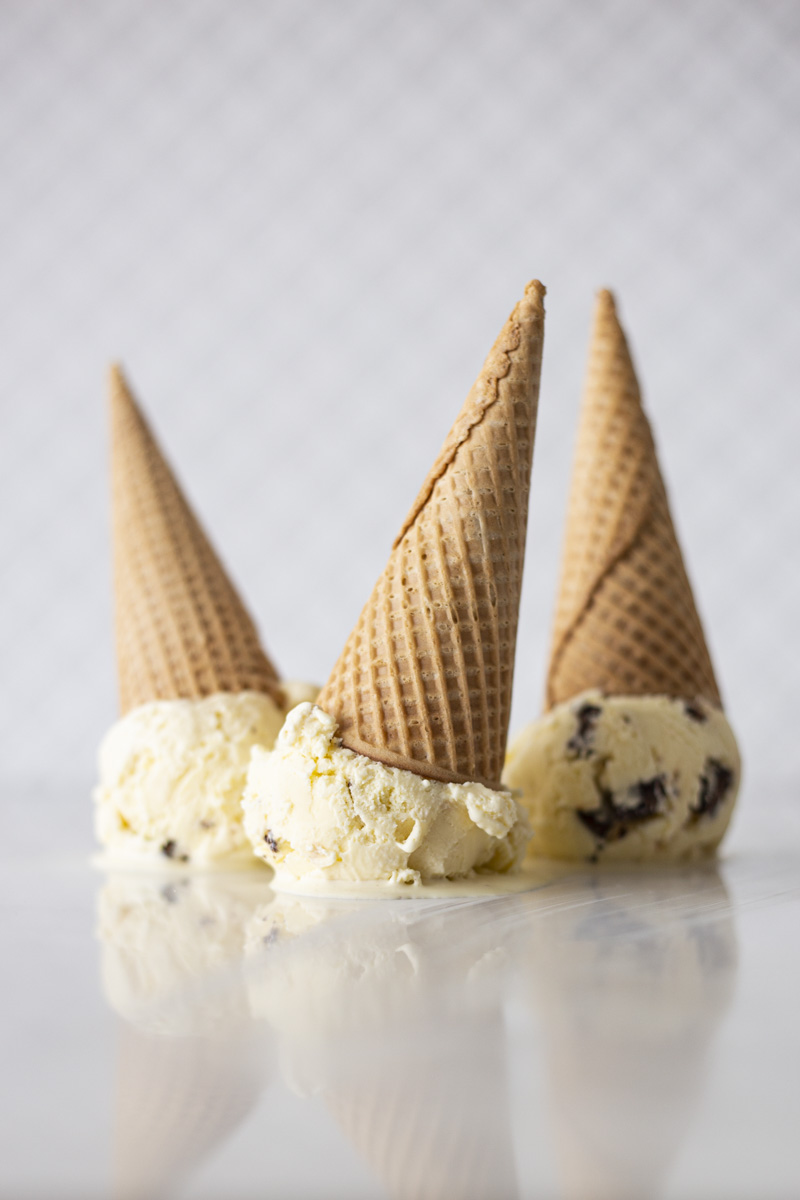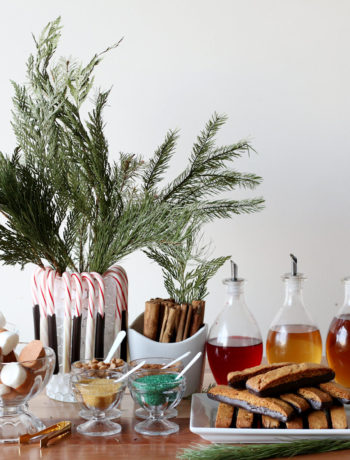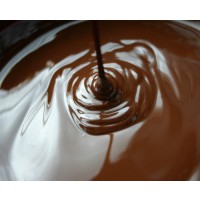Ready for the best summer tradition ever? It would have to be home made ice cream. There is something so uniquely satisfying and nostalgic about it. And crafting frozen treats in your home kitchen is super easy and allows for endless creativity with delicious results. It’s such a fun way to get the entire family involved. What’s more, you can customize basically everything! But it can get sticky trying to get the perfect creamy yet firm consistency that is a trademark of good ice cream. We want to help! Here are some of the best tips and techniques we have discovered to improve your own ice cream making.
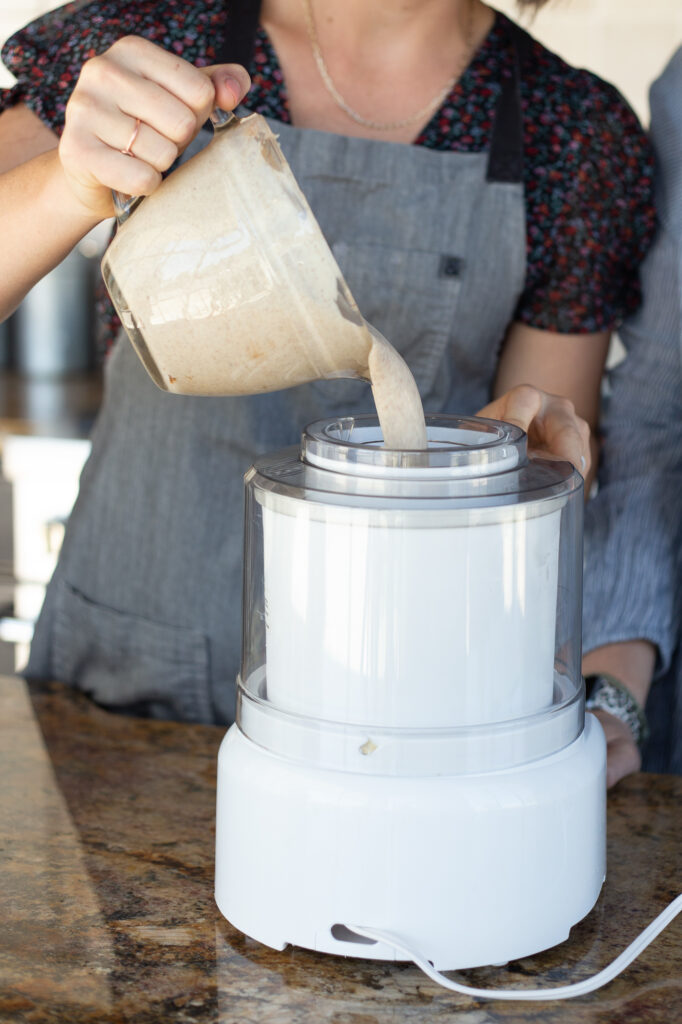
1. Invest in a Quality Homemade Ice Cream Maker
This is key! The type of ice cream machine you use is so important if you want smooth, creamy results. Now, there are two main types of ice cream makers to consider: freezing bowl models and compressor models. We really like the Cuisinart 2 Quart Ice Cream Maker. It’s a freezing bowl model that is so easy to use. And with the double insulation, you can make homemade ice cream in as little as 20 minutes. To read more about our own ice cream machine showdown, check out this blog post.
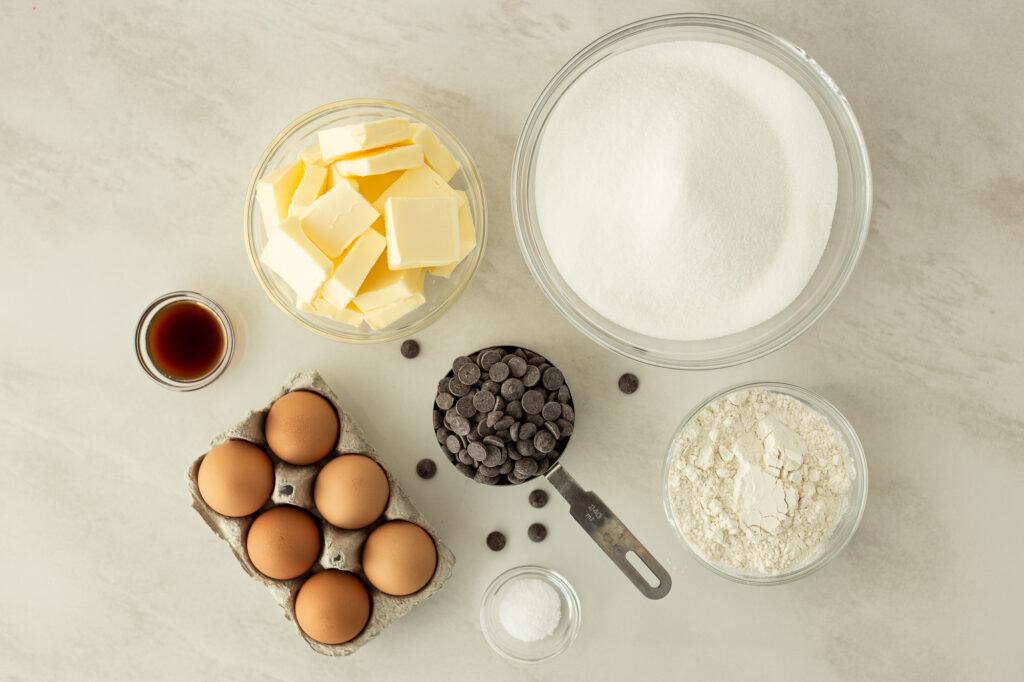
2. Start with the Best Ice Cream Ingredients
Better ingredients equals better ice cream. And because most recipes for ice cream are pretty simple with just a few items, this applies to any and every ingredient you use. Use dairy products with high-fat content. Trust us! If you try to use skim milk, the results just will not be the same. Use the full fat dairy, the good chocolate chips, and the best cocoa powder. Think fresh spices, local honey, kosher salt. With simple recipes, we want to make every ingredient count!
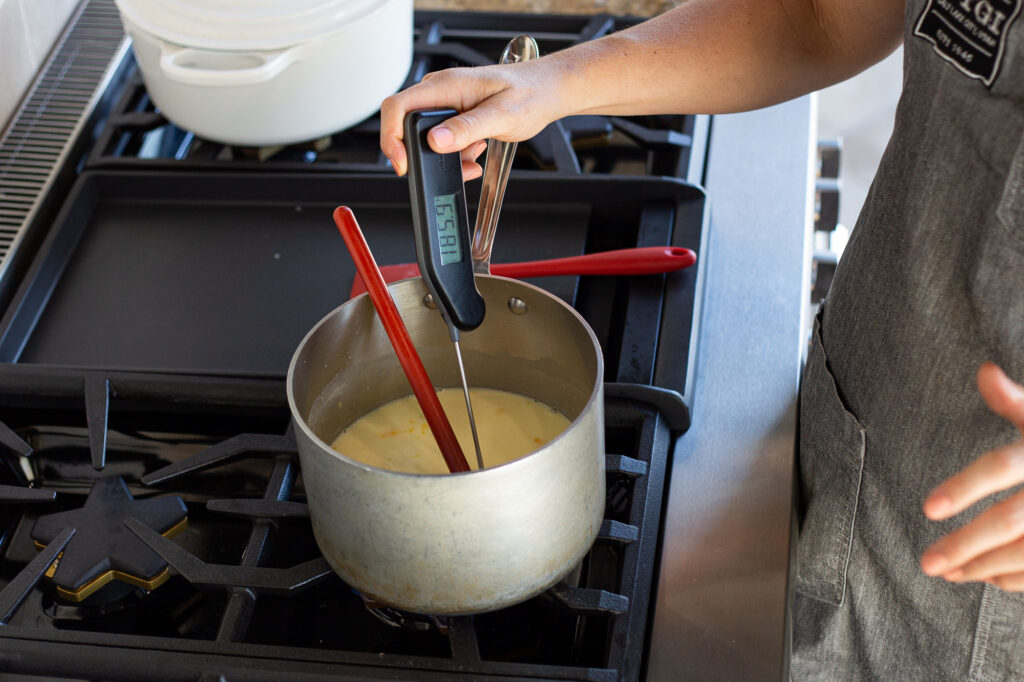
3. Dig Out a Reliable Thermometer
Most ice cream recipes call for a custard base with cooked egg yolks. If this is true for your recipe, then you need full control over the temperature. A digital thermometer means you can make sure your base reaches just the right temperature to avoid curdling and still get the optimal texture in your end result.
4. Embrace Alternative Sweeteners
The kind of sugar and sweetener you use matters. Looking for the classic, chewy richness in churned ice cream? Then you want to try high-viscosity liquid sweeteners. Options might include honey, corn syrup, or glucose syrup. Substituting just a small portion of granulated sugar with a high-viscosity sweetener will have a big impact on the texture of your final result. But viscosity isn’t the only thing to keep in mind. You also have to think about sweetness. Honey is sweeter than granulated sugar. So don’t add too much honey, or the flavor and sweetness could overwhelm everything else.
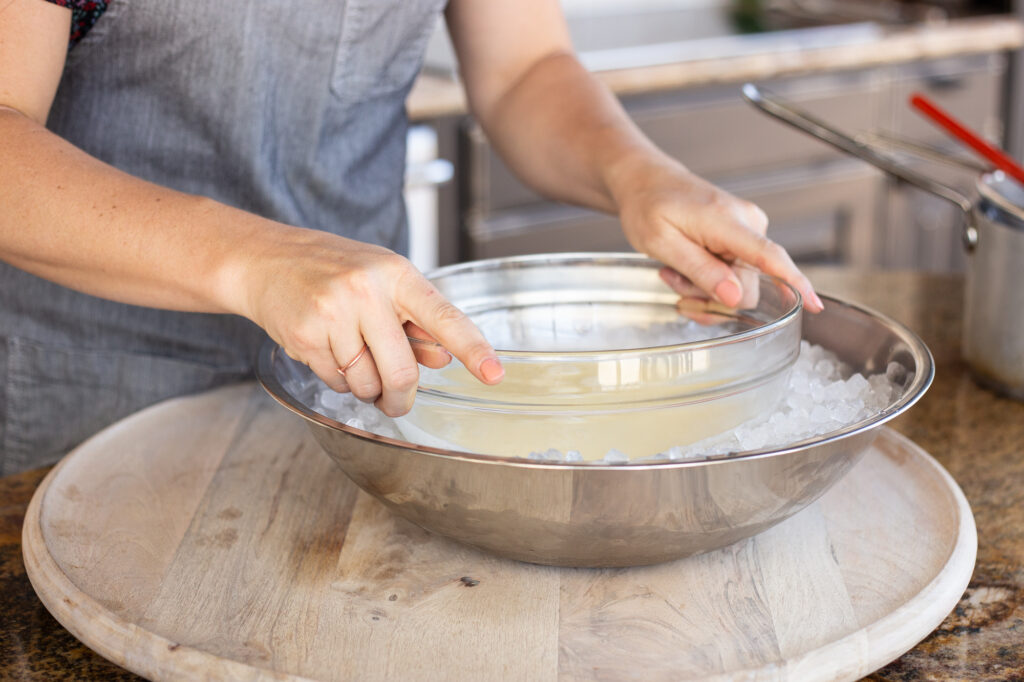
5. Thoroughly Chill Your Base
Next up, If you’re making a custard base, it’s important to fully chill the mixture. However, even if you are not making a custard base, you still want to work with colder ingredients. You want it to be as cold as possible, without freezing, before putting it into the ice cream maker. It will help yield the smoothest and creamiest texture. This is one of the reasons why we love to mix it up in both glass and stainless steel mixing bowls. They are ideal for preparing your base because they are non-reactive and maintain. Also, because they can stack, it can help cool the mixture down a lot faster.
6. Perfect Freezing
Did you know the speed at which you freeze ice cream will play a huge role in how icy or smooth your dessert will be. Speed and cold temperatures are your best friend. The faster you can bring the base from liquid to solid–the smoother it will be. That’s why, if your machine uses a freezing bowl, it’s so important to make sure the bowl is completely frozen. This could take 24-36 full hours in the freezer for it to be completely solid inside. This is why we keep a spare bowl in the freezer. At. All. Times.
7. Air Incorporation
What’s the difference between ice cream and a frozen block of milk? Air! This is what the ice cream machine does through a process called churning. It freezes and mixes the ice cream simultaneously. Additionally, the amount of air added to an ice cream base is called “overrun.” Typically, premium, store-bought ice creams have approximately 22-25% overrun while lower quality, less expensive ice creams can have up to 100% overrun (meaning air makes up more than half of the volume). This means, in general, lower overrun results in dense, creamier, richer ice cream. And, in terms of overrun, your homemade ice cream mixed in a small appliance will be closer to premium, store-bought ice cream.
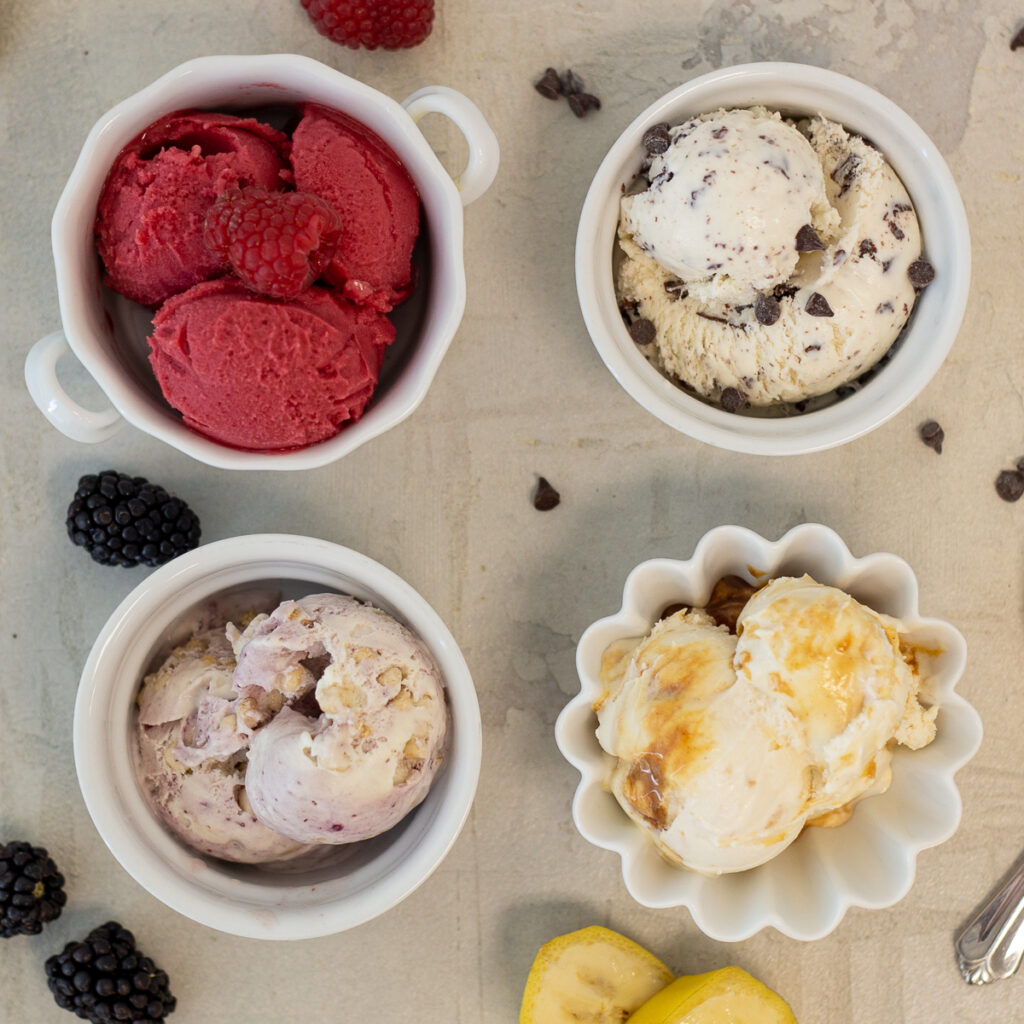
8. Experiment with Flavors and Mix-Ins
Wanting to try different flavor extracts? Things like almond, peppermint, and vanilla extracts can add delicious depth of flavor. Just be sure to add them as the base is cooled (even right before you pour it into the ice cream machine), so the flavors don’t deteriorate. Adding candy pieces, nuts, fresh fruit? These can add a whole new flavor and texture dimension. You want the pieces to be small so the ice cream machine can easily incorporate them into the frozen ice cream. If you want these flavors to break down and spread throughout the entire batch, then add them in at the start of churning. If you prefer chunks of flavor, just wait and add the mix-ins until the last couple of minutes of churning.
9. Scoop and Serve
Serving up your frozen treat is a breeze with a good quality ice cream scoops and spoons. Look for one with a comfortable grip and sturdy handle. Now, you might favor scoops that have moving parts like springs or release levers. Or you might like scoops with a sharp edge filled with heat-conducting fluid for an easy guide through the ice cream. Other things to consider in particular are the scoop size, material, and whether or not it is dishwasher-safe.
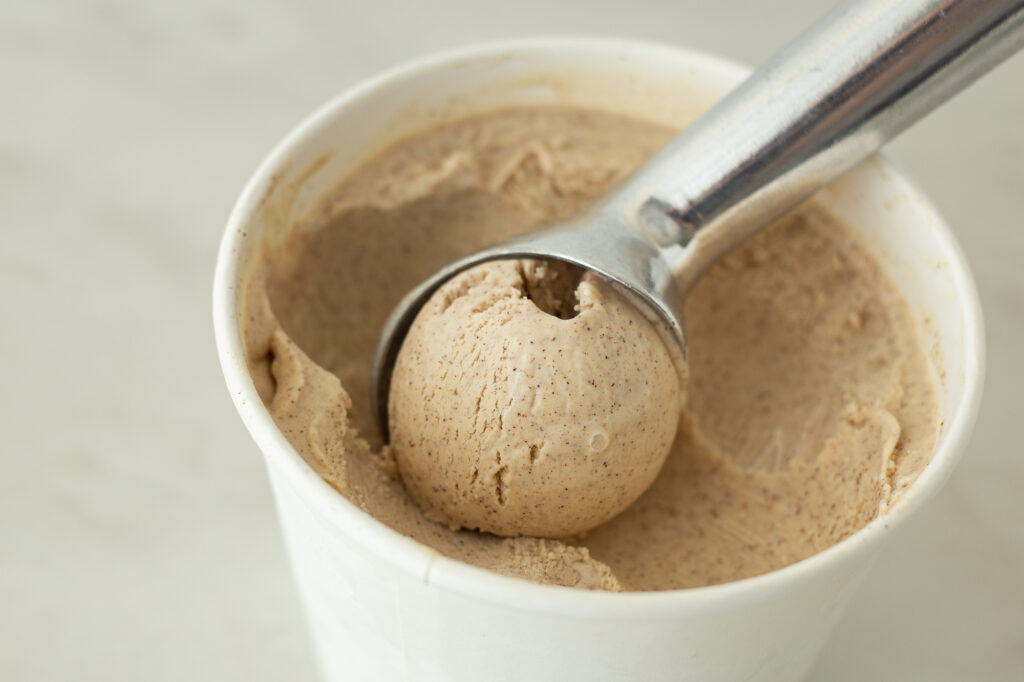
10. Ensure Proper Storage
Another aspect of ice cream is how well it maintains its sensory properties and stability during storage. Part of that is how well you’ve made your base and another part is the ice cream container you store it in. Getting a good container will maintain freshness and texture. You want something airtight and freezer-safe. And, when you put your ice cream in the freezer to firm it up, be sure to cover the top with plastic. Here are a bunch of the cups and containers you can use for storing and serving.
Making homemade ice cream is both art and science partnered with the best tools and techniques. With a handful of delicious recipes and a little practice following these tips, you can expect to get the best results.

